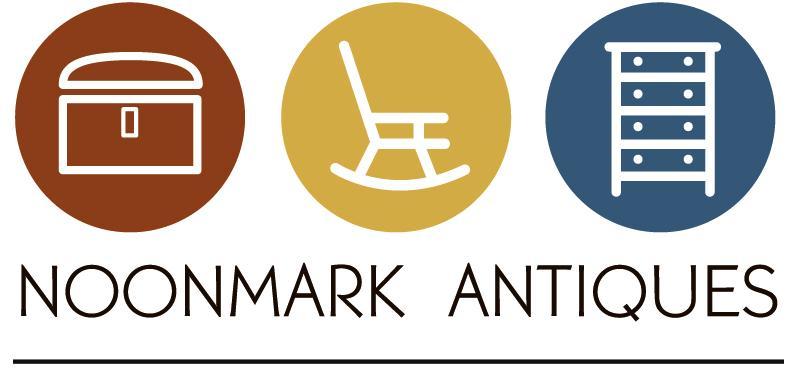
The artist was Charles Bunting Lawrence, 1790-1864. He worked from New Jersey and Philadelphia during the early 1800’s. Some of his pieces sold recently at Christie’s while others are part of a collection at the New Jersey Historical Society. His subjects range from steamboats and riverscapes of the Delaware and Schuylkill Rivers, to portraits. He was commissioned by wealthy patrons such as Nicholas Biddle and Joseph Bonaparte, King of Spain. Several of Lawrence’s riverscapes depict Point Breeze, Joseph Bonaparte’s magnificent American estate.
Joseph Bonaparte was the brother of Napoleon, who appointed Joseph as King of Spain in 1808. When Napoleon lost power, Joseph came to America in 1815.( Mark Twain’s charming depiction of itinerant kings and dukes popping up in early American country villages come to mind.) Joseph Bonaparte did indeed settle in Bordentown on the banks of the Delaware and Crosswicks Creek. He created a grand garden estate which housed a masterful collection of European paintings and enormous library. The mansion of Joseph Bonaparte was destroyed by fire in 1820, making the artwork of Charles Bunting Lawrence an important record of a by-gone era.
Charles Bunting Lawrence did not live far from Joseph Bonaparte. Records from the deed books at the Court House in Mount Holly, New Jersey indicate that at the age of 24, Charles Bunting Lawrence bought property and a house on Main Street in Bordentown from his father, Thomas Lawrence in 1814. Charles also sold 18 acres of land and marsh in Bordentown on the Delaware River to Thomas Lawrence in 1817, and bought more property in Bordentown from his Uncle Ezra Bunting in 1818. All of this real estate activity occurred before Charles Bunting Lawrence reached the age of 30.
Thomas Lawrence, a Quaker and father of Charles, married Hannah Bunting in 1788 at the Chesterfield Meeting. Hannah Bunting, the mother of Charles Lawrence, was the daughter of Timothy Bunting and Elizabeth Headley of Falls Township, Pennsylvania. The town of Fallsington, settled by Quakers in Falls Township, is northwest of Bordentown. Pennsbury Manor, William Penn’s Country estate on the Delaware River, lies between the two towns. Incidentally, The Falls of the Delaware were not so much falls, but a series of rapids which made navigation by boat to Trenton difficult.
Timothy Bunting, the maternal grandfather of Charles Bunting Lawrence was the son of Samuel Bunting and Priscilla Burgess. Maternal Great grandmother Priscilla Burgess was the daughter of Samuel and Eleanor Burgess who came to America in 1685 and purchased 200 acres in the area of Fallsington. Maternal great, great grandfather Samuel Burgess donated 6 acres for the site of the original Friends Meeting House in Fallsington. When William Penn spent time at his country estate of Pennsbury, he would worship at the Fallsington Meeting House.
Given the strong Quaker heritage of Charles Bunting Lawrence, I was surprised to discover that after the Revolutionary War, in 1803, when Charles Bunting Lawrence was 13 years old, Thomas Paine gave an address at the home of Thomas Lawrence, the father of Charles Bunting Lawrence. An explanation could be that according to the deed book at the Court House in Mount Holly New Jersey, the Lawrence home was adjacent to the home of Colonel Joseph Kirkbride, head of the Pennsylvania Militia and staunch supporter of Thomas Paine, who also lived in Bordentown during the Revolution. Kirkbide’s home in Bucks County was destroyed by the British. He came to Bordentown, a hot bed of revolutionary fervor. An interesting side note: The British severely punished Bordentown for a very clever plot. The Bordentown folks filled barrels with gunpowder and sent them floating down the Delaware to blow up the British boats. In retaliation, the British burned the town of Bordentown.
Friendships forged during tough times are not easily broken. Even though Thomas Paine fell out of popular favor after the Revolution, he remained a friend of Joseph Kirkbride and no doubt, of Thomas Lawrence, as well, and was welcome in his home.
The tiny town of Bordentown was a destination of the rich and famous of the day. Besides Thomas Paine, Francis Hopkinson a signer of the Declaration of Independence, owned a home on the southeast corner of Farnsworth Avenue and Park Street. Benjamin Franklin, Robert Morris, and Dr. Benjamin Rush traveled to visit Thomas Paine in Bordentown.
It is not surprising that in 1803, artist Gilbert Stuart sent his family from Philadelphia to live in Bordentown while he worked in the Washington, the new Capitol of our country. The reason Gilbert Stuart placed his family in Bordentown was because there were not enough homes built in the fledgling town of Washington. Gilbert Stuart was an artistic sensation in Washington. Eventually, Stuart moved to Boston and stopped at Bordentown to visit his family in 1805. By then, Charles Bunting Lawrence was 15 years old. It is possible that Lawrence received artistic training from Gilbert Stuart in Bordentown at this time. According to the “History of the Rise and Progress of the Arts of Design in the United States” by William Dunlap, Charles Bunting Lawrence studied with Rembrandt Peale and Gilbert Stuart. Rembrandt Peale was the son of Charles Wilson Peale, a founder of the Pennsylvania Academy of Fine Arts in 1805. After Gilbert Stuart and his family departed for Boston in 1806, possibly Rembrandt Peale encouraged Charles Bunting Lawrence to attend the Academy. From 1811 to 1830, Lawrence exhibited his works at the Academy.
We do not know when the portrait of Richard Stockton Jr. was painted by Charles Bunting Lawrence or his connection to him. We do know that while he was a lawyer, Richard Stockton Jr. handled a number of legal cases involving disputes on the Delaware River. Perhaps they met through mutual friends in Bordentown. Pictured here is the inscription painted on the reverse side of the canvas.
